Business Environment Analysis: Tesco, CSR, Stakeholders, and Structure
VerifiedAdded on 2023/01/12
|13
|1351
|91
Report
AI Summary
This report provides an in-depth analysis of the business environment, encompassing private, public, and charity organizations. It explores the benefits of Corporate Social Responsibility (CSR) and the components of business culture, including rules, traditions, and personalities. The report then focuses on Tesco, examining its stakeholders (shareholders and customers), business objectives (long-term supermarket chain success, expansion), and the roles of different departments (finance and marketing). It also describes Tesco's functional organizational structure, highlighting the roles of managers and employees within the finance, human resource, operational, and marketing departments. The report is supported by relevant academic references.
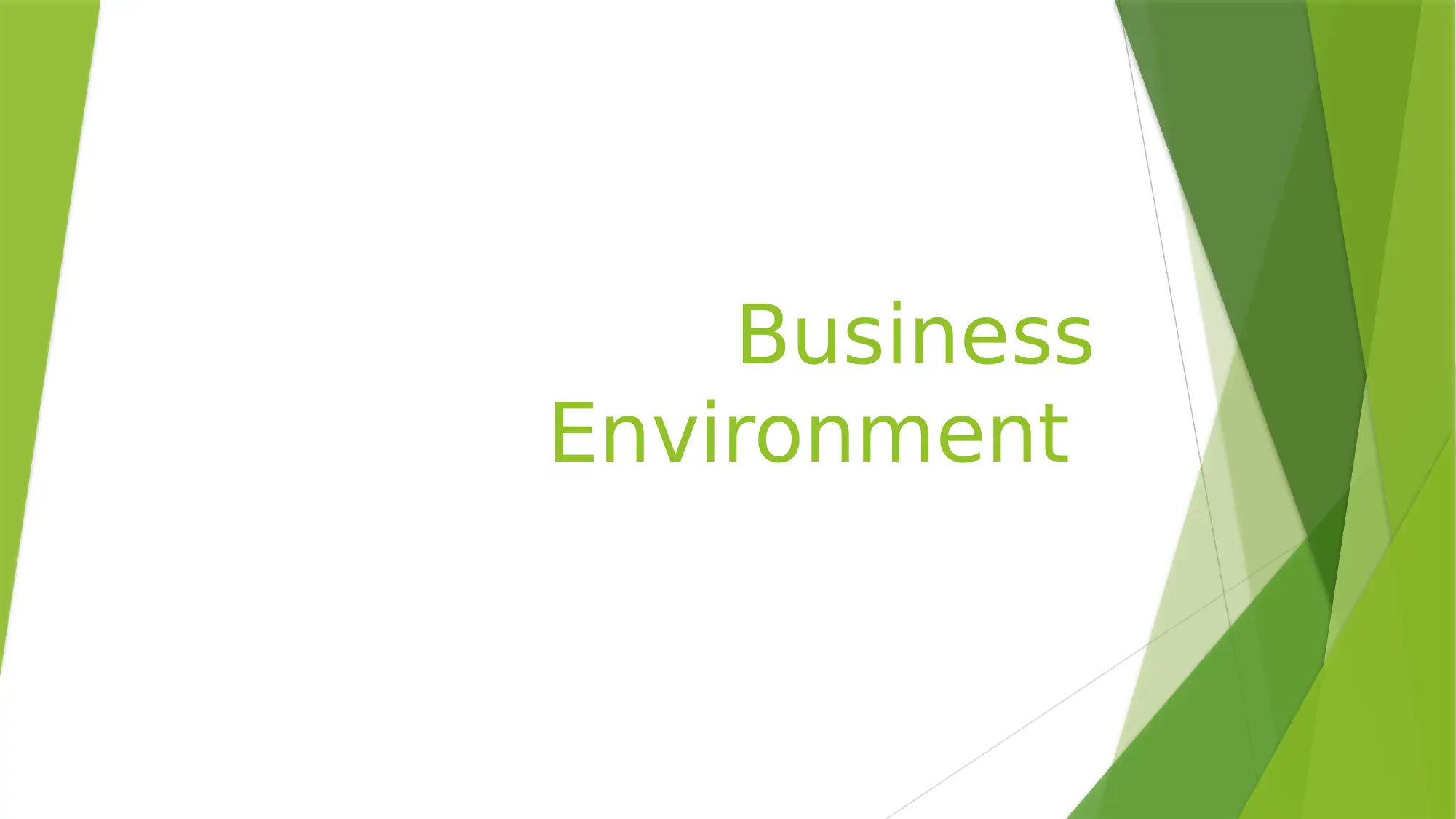
Business
Environment
Environment
Paraphrase This Document
Need a fresh take? Get an instant paraphrase of this document with our AI Paraphraser
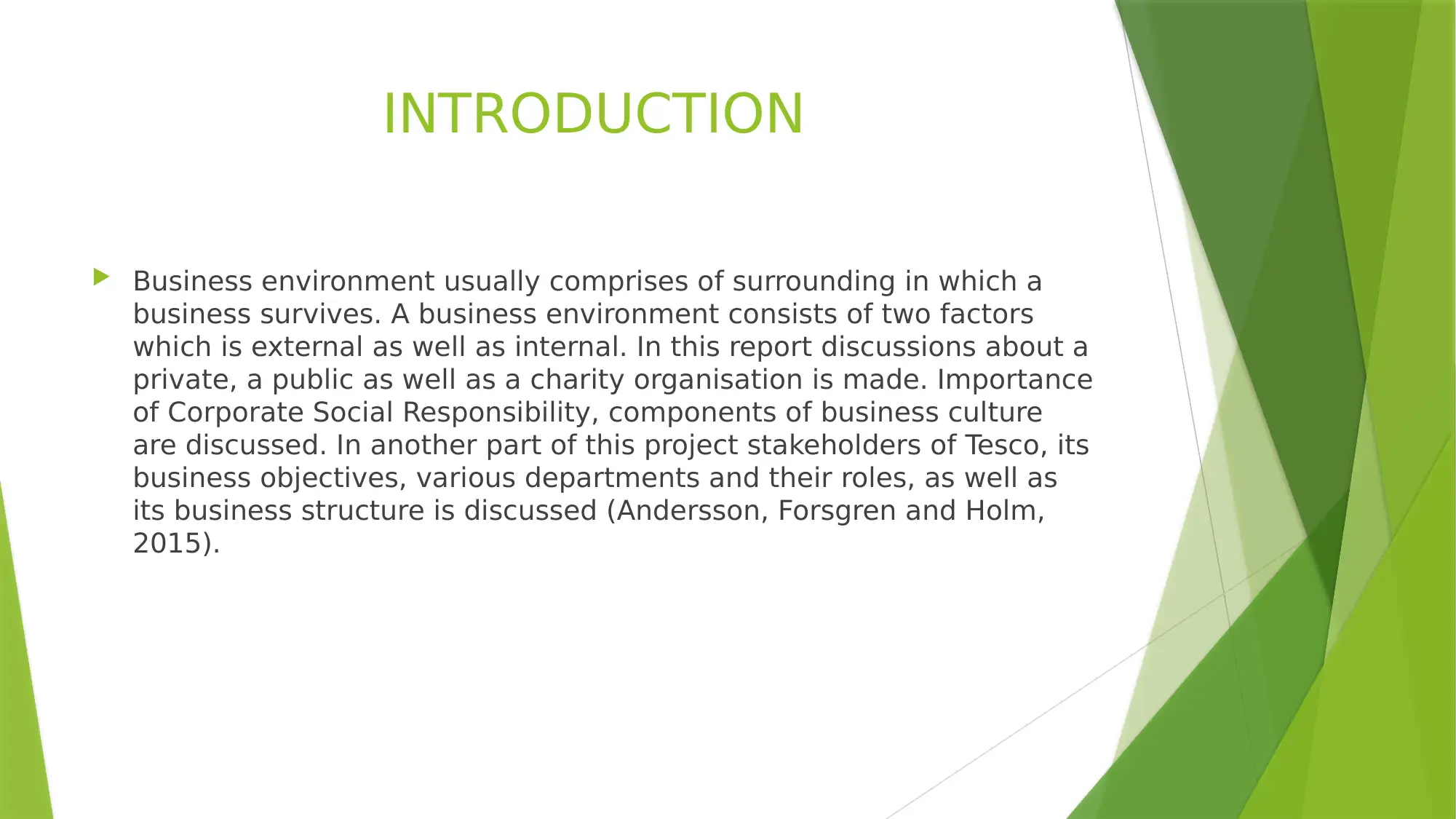
INTRODUCTION
Business environment usually comprises of surrounding in which a
business survives. A business environment consists of two factors
which is external as well as internal. In this report discussions about a
private, a public as well as a charity organisation is made. Importance
of Corporate Social Responsibility, components of business culture
are discussed. In another part of this project stakeholders of Tesco, its
business objectives, various departments and their roles, as well as
its business structure is discussed (Andersson, Forsgren and Holm,
2015).
Business environment usually comprises of surrounding in which a
business survives. A business environment consists of two factors
which is external as well as internal. In this report discussions about a
private, a public as well as a charity organisation is made. Importance
of Corporate Social Responsibility, components of business culture
are discussed. In another part of this project stakeholders of Tesco, its
business objectives, various departments and their roles, as well as
its business structure is discussed (Andersson, Forsgren and Holm,
2015).
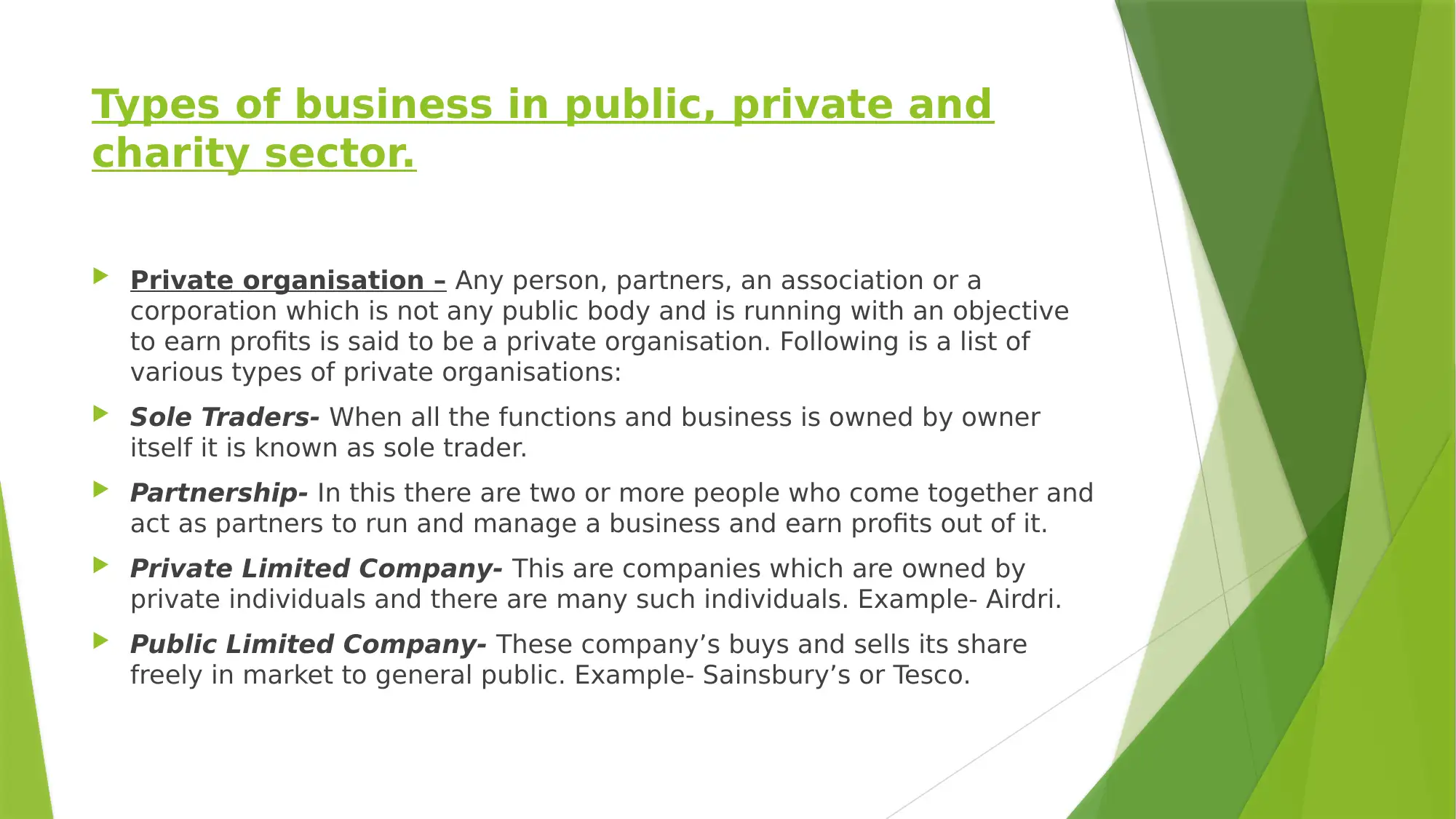
Types of business in public, private and
charity sector.
Private organisation – Any person, partners, an association or a
corporation which is not any public body and is running with an objective
to earn profits is said to be a private organisation. Following is a list of
various types of private organisations:
Sole Traders- When all the functions and business is owned by owner
itself it is known as sole trader.
Partnership- In this there are two or more people who come together and
act as partners to run and manage a business and earn profits out of it.
Private Limited Company- This are companies which are owned by
private individuals and there are many such individuals. Example- Airdri.
Public Limited Company- These company’s buys and sells its share
freely in market to general public. Example- Sainsbury’s or Tesco.
charity sector.
Private organisation – Any person, partners, an association or a
corporation which is not any public body and is running with an objective
to earn profits is said to be a private organisation. Following is a list of
various types of private organisations:
Sole Traders- When all the functions and business is owned by owner
itself it is known as sole trader.
Partnership- In this there are two or more people who come together and
act as partners to run and manage a business and earn profits out of it.
Private Limited Company- This are companies which are owned by
private individuals and there are many such individuals. Example- Airdri.
Public Limited Company- These company’s buys and sells its share
freely in market to general public. Example- Sainsbury’s or Tesco.
⊘ This is a preview!⊘
Do you want full access?
Subscribe today to unlock all pages.

Trusted by 1+ million students worldwide
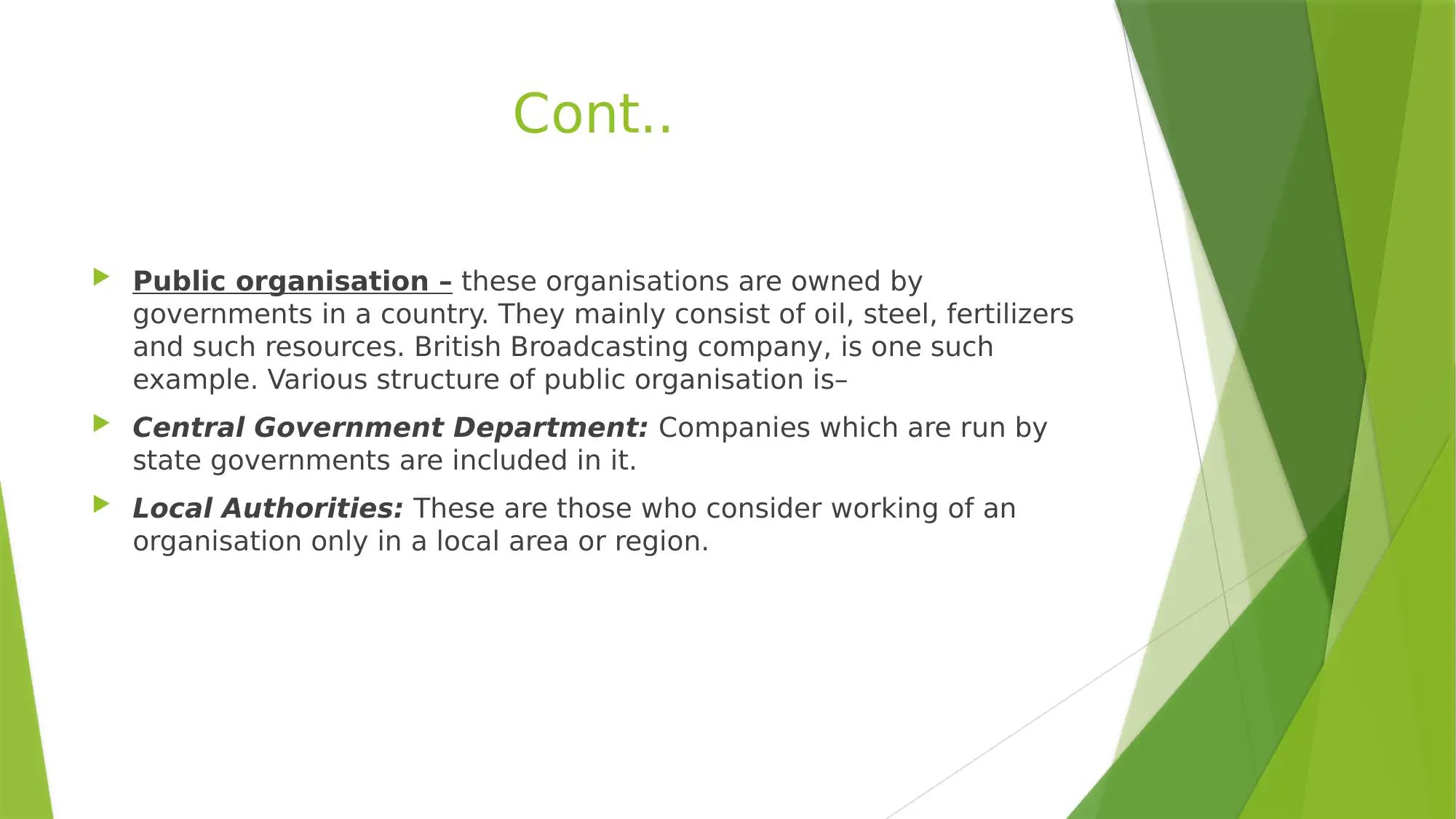
Cont..
Public organisation – these organisations are owned by
governments in a country. They mainly consist of oil, steel, fertilizers
and such resources. British Broadcasting company, is one such
example. Various structure of public organisation is–
Central Government Department: Companies which are run by
state governments are included in it.
Local Authorities: These are those who consider working of an
organisation only in a local area or region.
Public organisation – these organisations are owned by
governments in a country. They mainly consist of oil, steel, fertilizers
and such resources. British Broadcasting company, is one such
example. Various structure of public organisation is–
Central Government Department: Companies which are run by
state governments are included in it.
Local Authorities: These are those who consider working of an
organisation only in a local area or region.
Paraphrase This Document
Need a fresh take? Get an instant paraphrase of this document with our AI Paraphraser
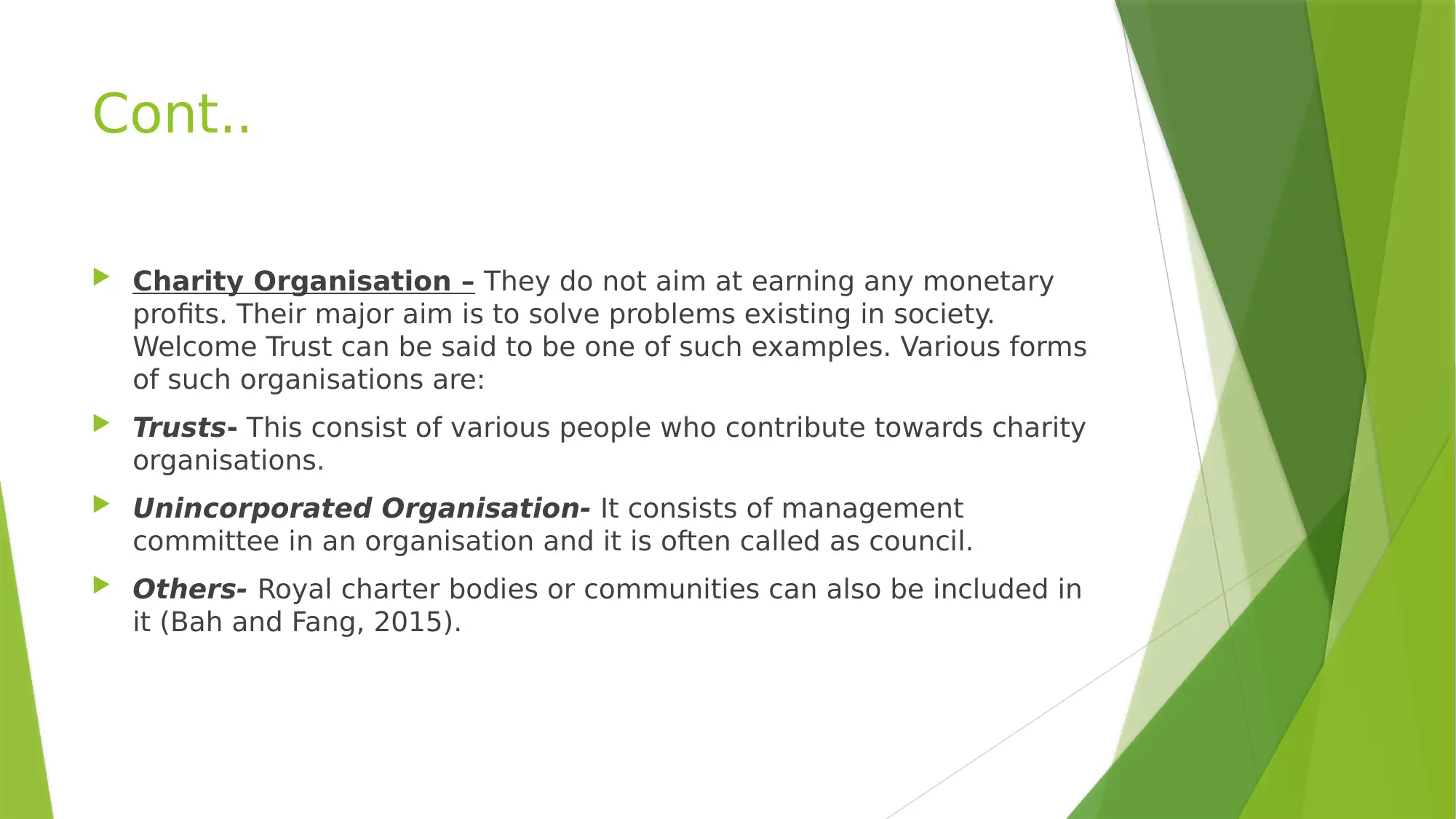
Cont..
Charity Organisation – They do not aim at earning any monetary
profits. Their major aim is to solve problems existing in society.
Welcome Trust can be said to be one of such examples. Various forms
of such organisations are:
Trusts- This consist of various people who contribute towards charity
organisations.
Unincorporated Organisation- It consists of management
committee in an organisation and it is often called as council.
Others- Royal charter bodies or communities can also be included in
it (Bah and Fang, 2015).
Charity Organisation – They do not aim at earning any monetary
profits. Their major aim is to solve problems existing in society.
Welcome Trust can be said to be one of such examples. Various forms
of such organisations are:
Trusts- This consist of various people who contribute towards charity
organisations.
Unincorporated Organisation- It consists of management
committee in an organisation and it is often called as council.
Others- Royal charter bodies or communities can also be included in
it (Bah and Fang, 2015).
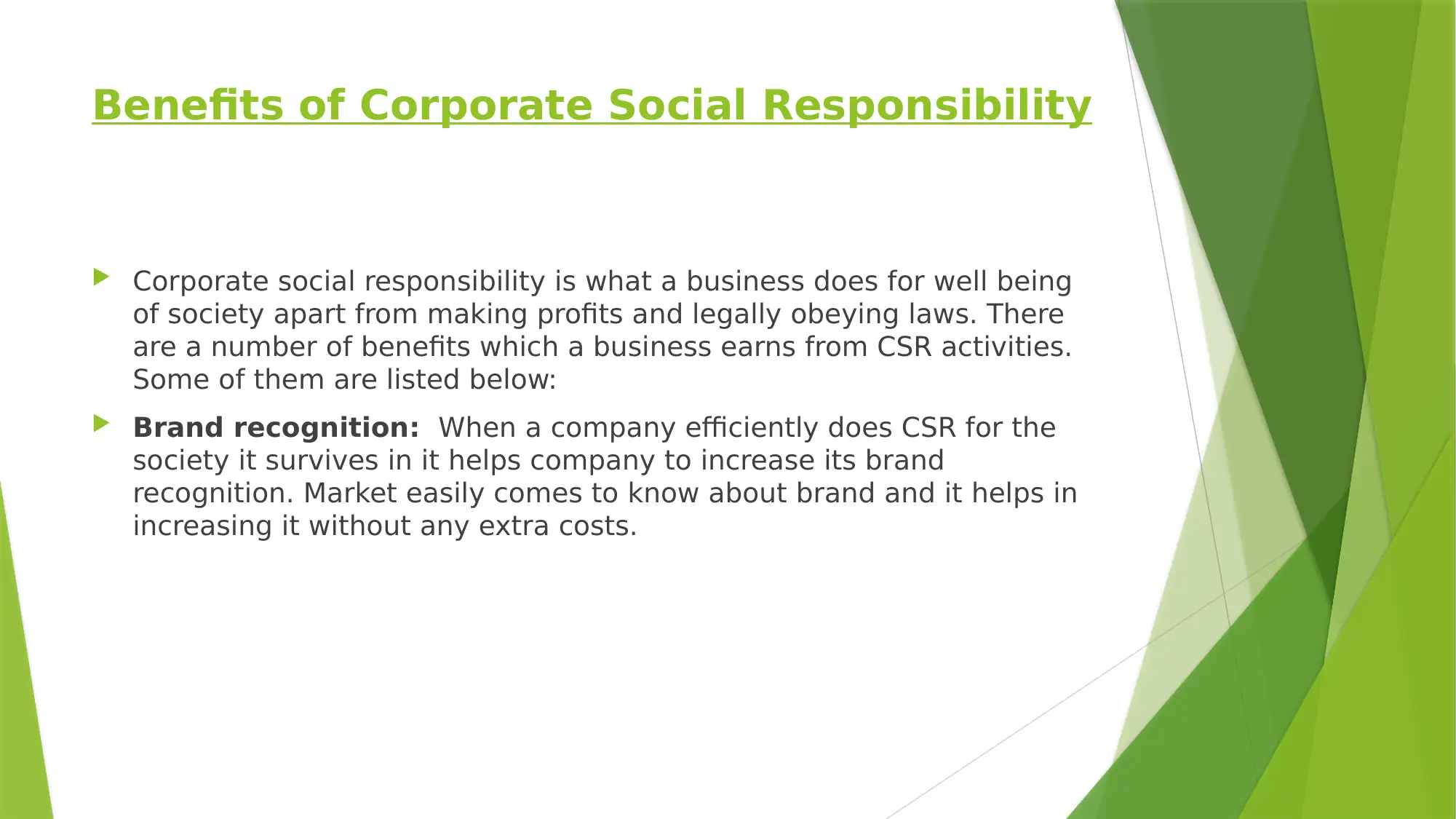
Benefits of Corporate Social Responsibility
Corporate social responsibility is what a business does for well being
of society apart from making profits and legally obeying laws. There
are a number of benefits which a business earns from CSR activities.
Some of them are listed below:
Brand recognition: When a company efficiently does CSR for the
society it survives in it helps company to increase its brand
recognition. Market easily comes to know about brand and it helps in
increasing it without any extra costs.
Corporate social responsibility is what a business does for well being
of society apart from making profits and legally obeying laws. There
are a number of benefits which a business earns from CSR activities.
Some of them are listed below:
Brand recognition: When a company efficiently does CSR for the
society it survives in it helps company to increase its brand
recognition. Market easily comes to know about brand and it helps in
increasing it without any extra costs.
⊘ This is a preview!⊘
Do you want full access?
Subscribe today to unlock all pages.

Trusted by 1+ million students worldwide
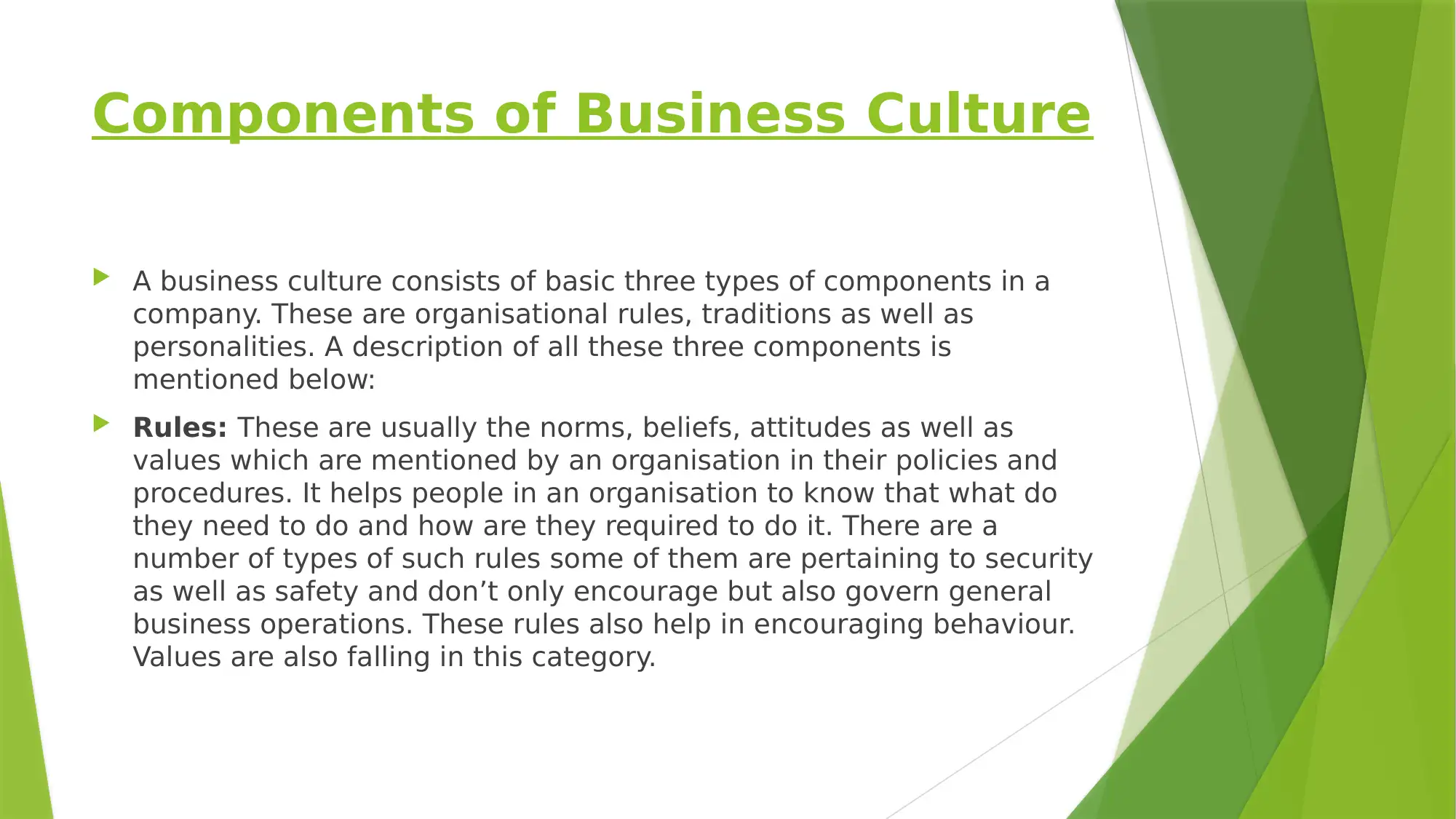
Components of Business Culture
A business culture consists of basic three types of components in a
company. These are organisational rules, traditions as well as
personalities. A description of all these three components is
mentioned below:
Rules: These are usually the norms, beliefs, attitudes as well as
values which are mentioned by an organisation in their policies and
procedures. It helps people in an organisation to know that what do
they need to do and how are they required to do it. There are a
number of types of such rules some of them are pertaining to security
as well as safety and don’t only encourage but also govern general
business operations. These rules also help in encouraging behaviour.
Values are also falling in this category.
A business culture consists of basic three types of components in a
company. These are organisational rules, traditions as well as
personalities. A description of all these three components is
mentioned below:
Rules: These are usually the norms, beliefs, attitudes as well as
values which are mentioned by an organisation in their policies and
procedures. It helps people in an organisation to know that what do
they need to do and how are they required to do it. There are a
number of types of such rules some of them are pertaining to security
as well as safety and don’t only encourage but also govern general
business operations. These rules also help in encouraging behaviour.
Values are also falling in this category.
Paraphrase This Document
Need a fresh take? Get an instant paraphrase of this document with our AI Paraphraser
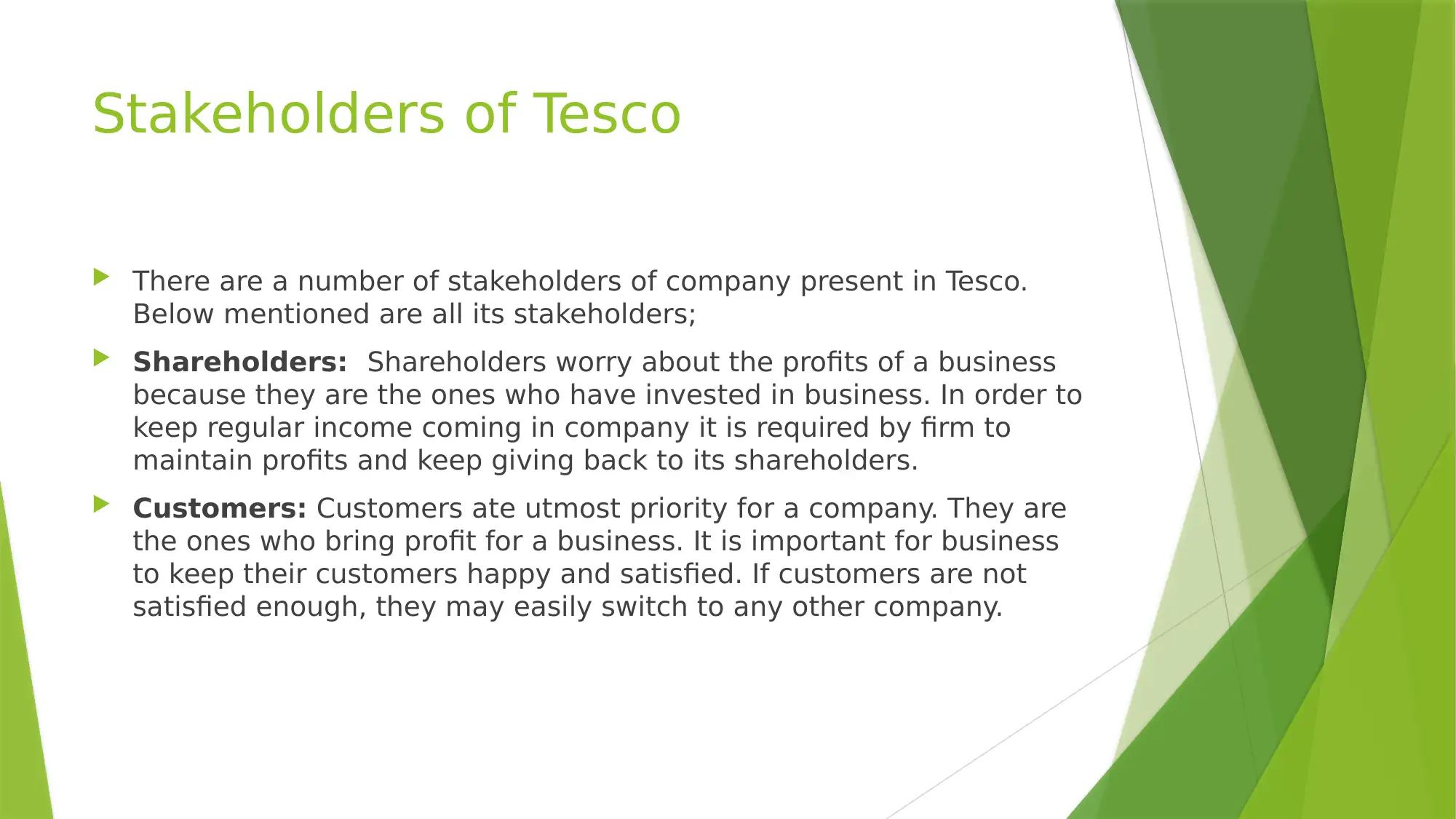
Stakeholders of Tesco
There are a number of stakeholders of company present in Tesco.
Below mentioned are all its stakeholders;
Shareholders: Shareholders worry about the profits of a business
because they are the ones who have invested in business. In order to
keep regular income coming in company it is required by firm to
maintain profits and keep giving back to its shareholders.
Customers: Customers ate utmost priority for a company. They are
the ones who bring profit for a business. It is important for business
to keep their customers happy and satisfied. If customers are not
satisfied enough, they may easily switch to any other company.
There are a number of stakeholders of company present in Tesco.
Below mentioned are all its stakeholders;
Shareholders: Shareholders worry about the profits of a business
because they are the ones who have invested in business. In order to
keep regular income coming in company it is required by firm to
maintain profits and keep giving back to its shareholders.
Customers: Customers ate utmost priority for a company. They are
the ones who bring profit for a business. It is important for business
to keep their customers happy and satisfied. If customers are not
satisfied enough, they may easily switch to any other company.
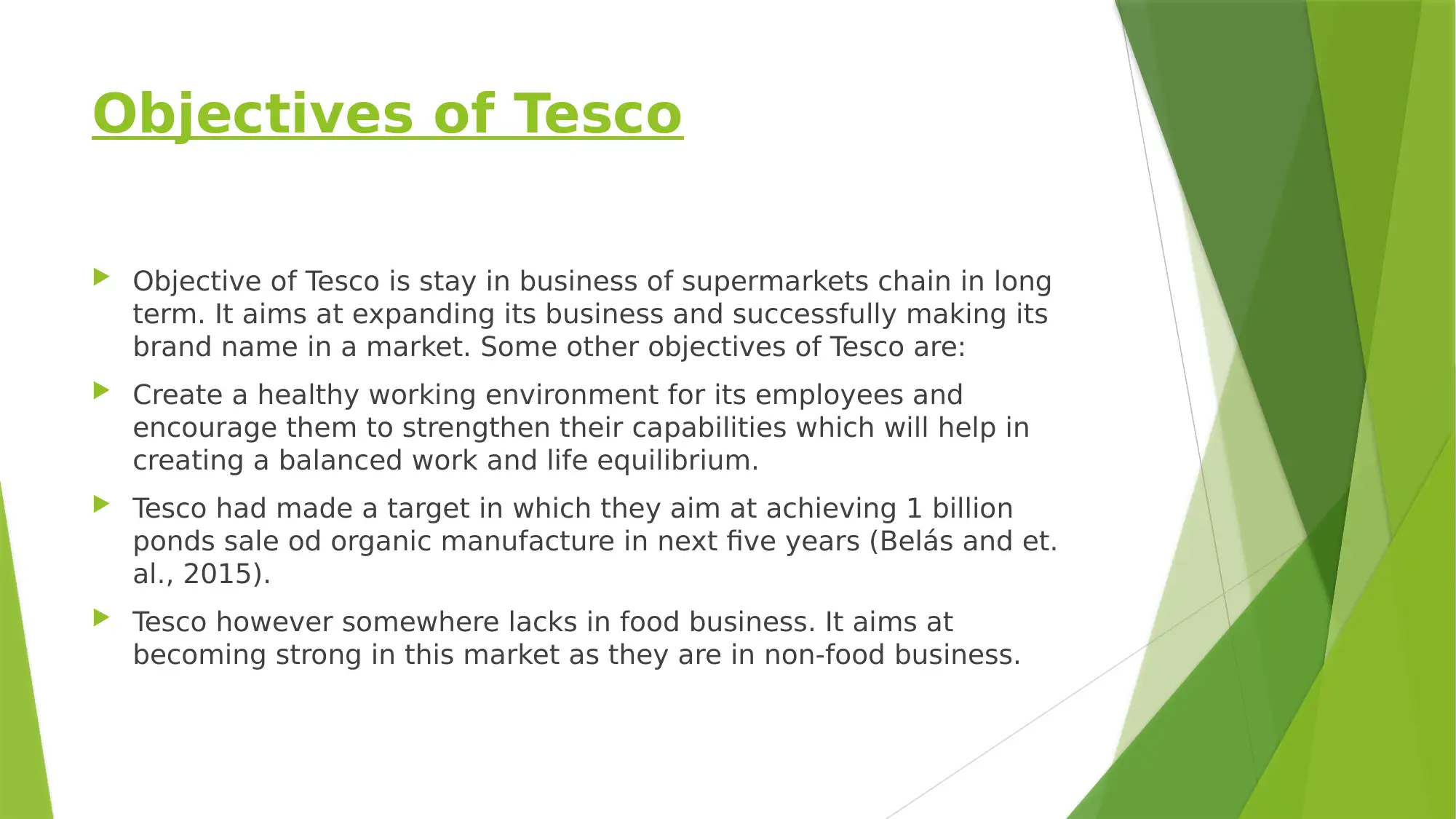
Objectives of Tesco
Objective of Tesco is stay in business of supermarkets chain in long
term. It aims at expanding its business and successfully making its
brand name in a market. Some other objectives of Tesco are:
Create a healthy working environment for its employees and
encourage them to strengthen their capabilities which will help in
creating a balanced work and life equilibrium.
Tesco had made a target in which they aim at achieving 1 billion
ponds sale od organic manufacture in next five years (Belás and et.
al., 2015).
Tesco however somewhere lacks in food business. It aims at
becoming strong in this market as they are in non-food business.
Objective of Tesco is stay in business of supermarkets chain in long
term. It aims at expanding its business and successfully making its
brand name in a market. Some other objectives of Tesco are:
Create a healthy working environment for its employees and
encourage them to strengthen their capabilities which will help in
creating a balanced work and life equilibrium.
Tesco had made a target in which they aim at achieving 1 billion
ponds sale od organic manufacture in next five years (Belás and et.
al., 2015).
Tesco however somewhere lacks in food business. It aims at
becoming strong in this market as they are in non-food business.
⊘ This is a preview!⊘
Do you want full access?
Subscribe today to unlock all pages.

Trusted by 1+ million students worldwide
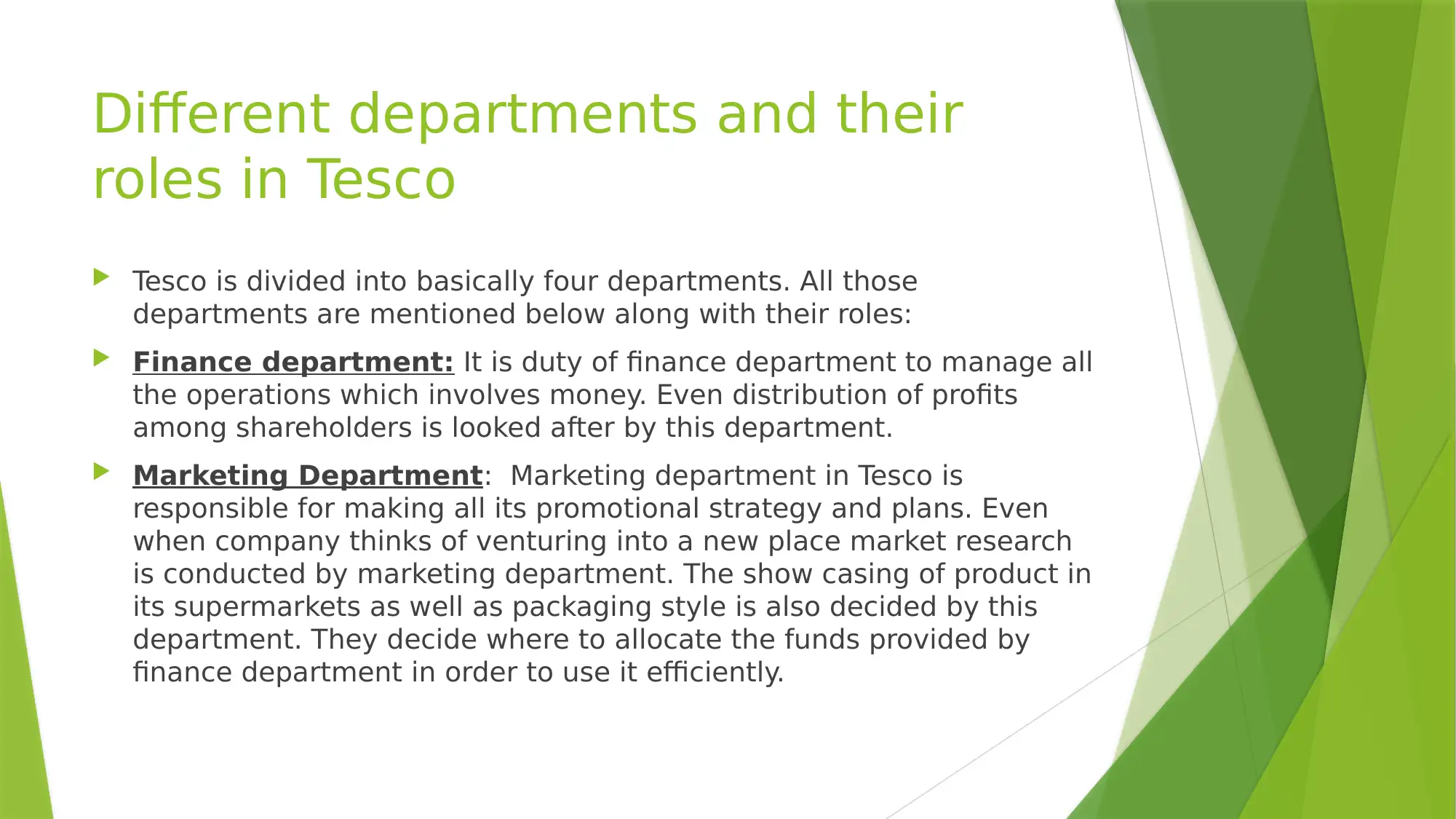
Different departments and their
roles in Tesco
Tesco is divided into basically four departments. All those
departments are mentioned below along with their roles:
Finance department: It is duty of finance department to manage all
the operations which involves money. Even distribution of profits
among shareholders is looked after by this department.
Marketing Department: Marketing department in Tesco is
responsible for making all its promotional strategy and plans. Even
when company thinks of venturing into a new place market research
is conducted by marketing department. The show casing of product in
its supermarkets as well as packaging style is also decided by this
department. They decide where to allocate the funds provided by
finance department in order to use it efficiently.
roles in Tesco
Tesco is divided into basically four departments. All those
departments are mentioned below along with their roles:
Finance department: It is duty of finance department to manage all
the operations which involves money. Even distribution of profits
among shareholders is looked after by this department.
Marketing Department: Marketing department in Tesco is
responsible for making all its promotional strategy and plans. Even
when company thinks of venturing into a new place market research
is conducted by marketing department. The show casing of product in
its supermarkets as well as packaging style is also decided by this
department. They decide where to allocate the funds provided by
finance department in order to use it efficiently.
Paraphrase This Document
Need a fresh take? Get an instant paraphrase of this document with our AI Paraphraser
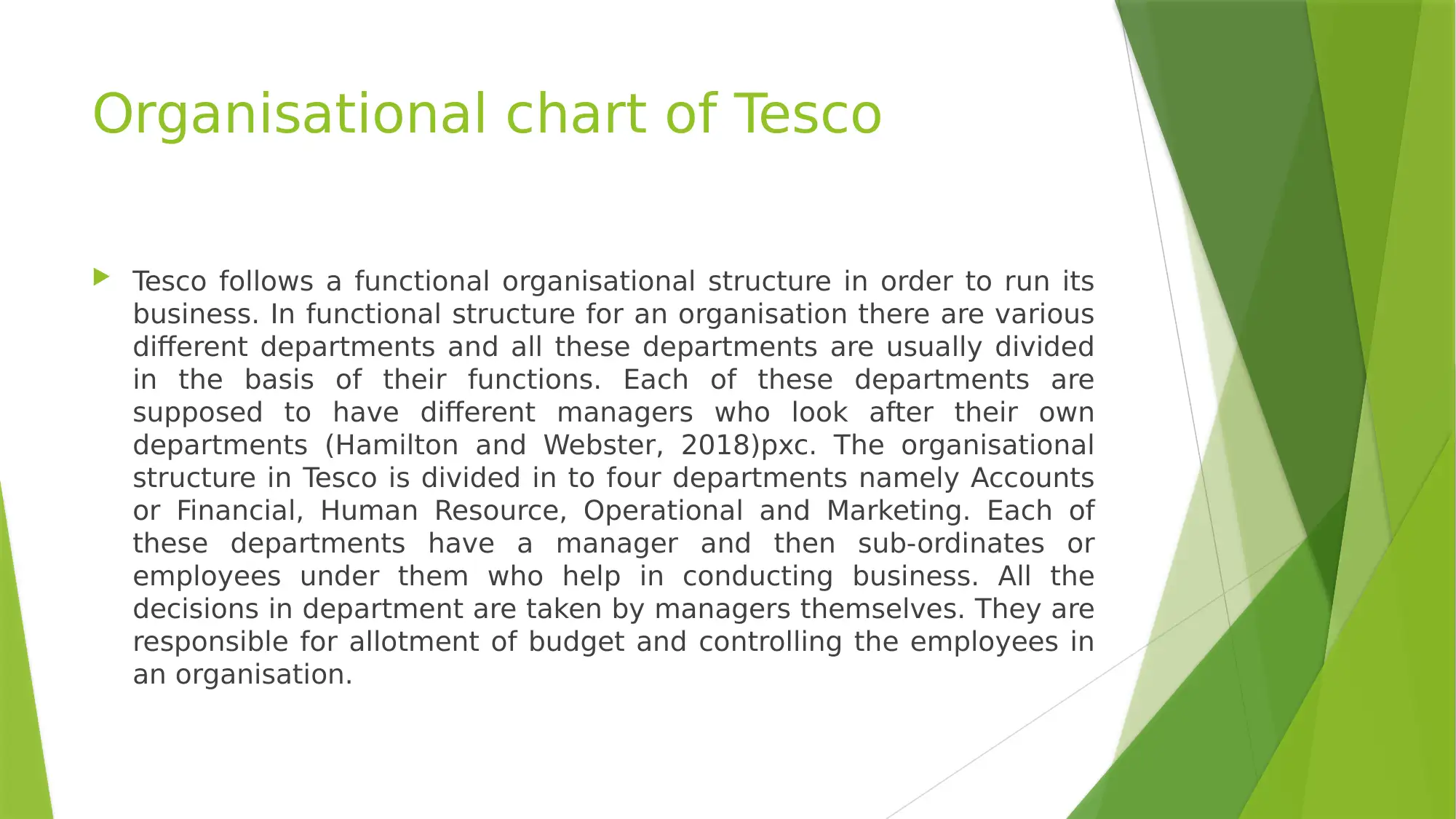
Organisational chart of Tesco
Tesco follows a functional organisational structure in order to run its
business. In functional structure for an organisation there are various
different departments and all these departments are usually divided
in the basis of their functions. Each of these departments are
supposed to have different managers who look after their own
departments (Hamilton and Webster, 2018)pxc. The organisational
structure in Tesco is divided in to four departments namely Accounts
or Financial, Human Resource, Operational and Marketing. Each of
these departments have a manager and then sub-ordinates or
employees under them who help in conducting business. All the
decisions in department are taken by managers themselves. They are
responsible for allotment of budget and controlling the employees in
an organisation.
Tesco follows a functional organisational structure in order to run its
business. In functional structure for an organisation there are various
different departments and all these departments are usually divided
in the basis of their functions. Each of these departments are
supposed to have different managers who look after their own
departments (Hamilton and Webster, 2018)pxc. The organisational
structure in Tesco is divided in to four departments namely Accounts
or Financial, Human Resource, Operational and Marketing. Each of
these departments have a manager and then sub-ordinates or
employees under them who help in conducting business. All the
decisions in department are taken by managers themselves. They are
responsible for allotment of budget and controlling the employees in
an organisation.
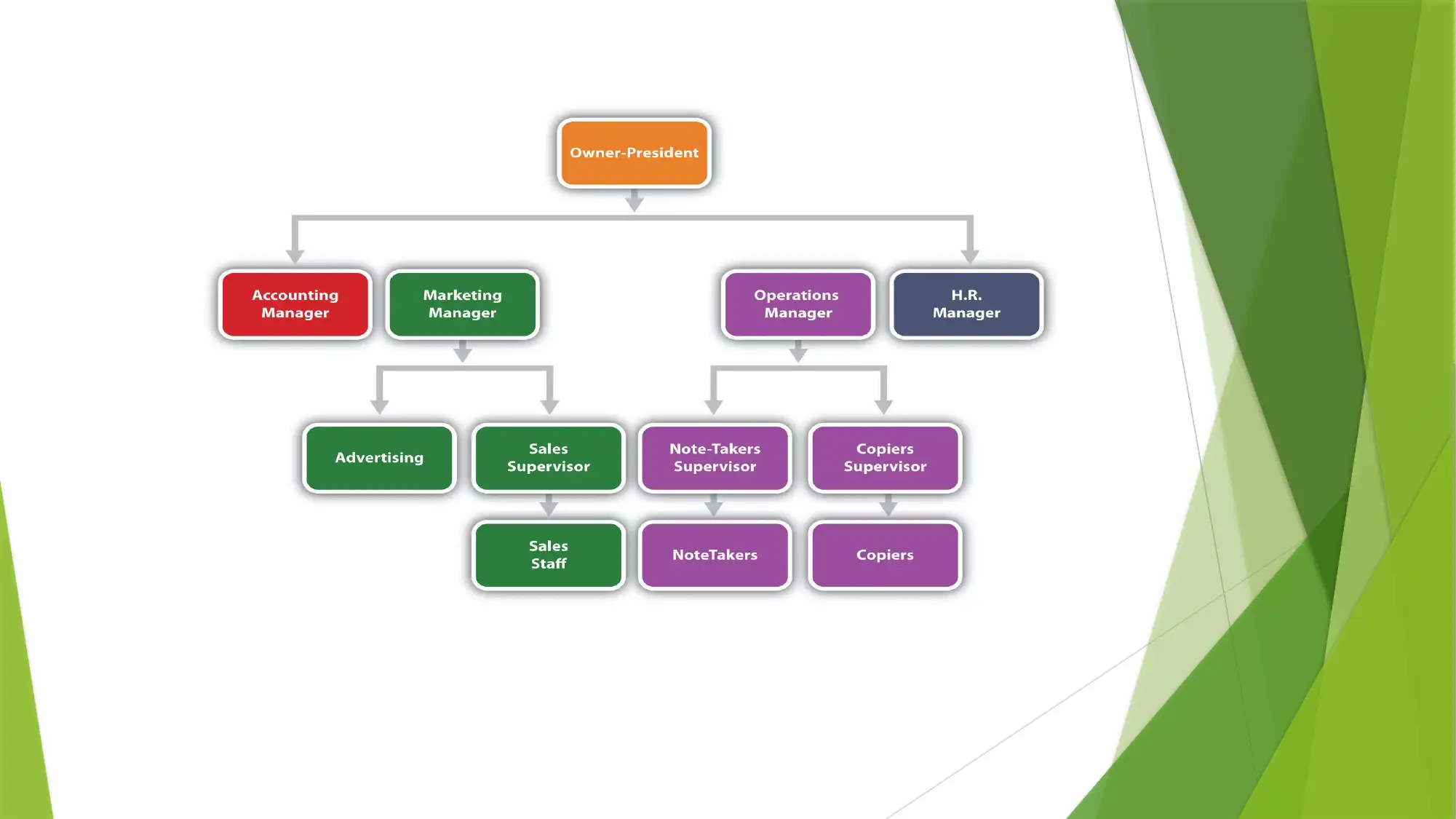
⊘ This is a preview!⊘
Do you want full access?
Subscribe today to unlock all pages.

Trusted by 1+ million students worldwide
1 out of 13
Related Documents
Your All-in-One AI-Powered Toolkit for Academic Success.
+13062052269
info@desklib.com
Available 24*7 on WhatsApp / Email
![[object Object]](/_next/static/media/star-bottom.7253800d.svg)
Unlock your academic potential
Copyright © 2020–2025 A2Z Services. All Rights Reserved. Developed and managed by ZUCOL.





